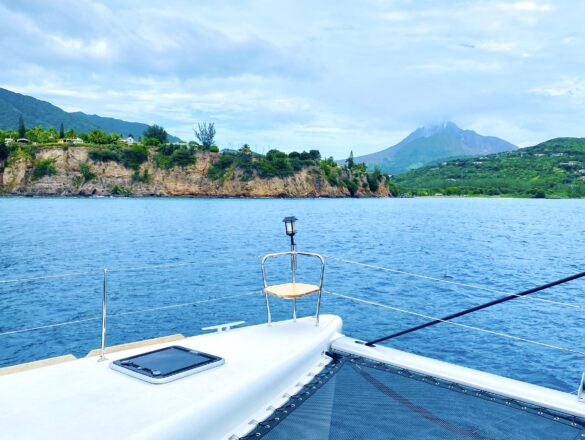After leaving Nevis once, on our way to Montserrat, and turning around because of strong winds, choppy seas, and inclement weather, we decided to try it again the next day. The seas had calmed down quite a bit in 24 hours, and all the conditions were right for a great 5-1/2 hour, 33 nautical mile sail to Montserrat.
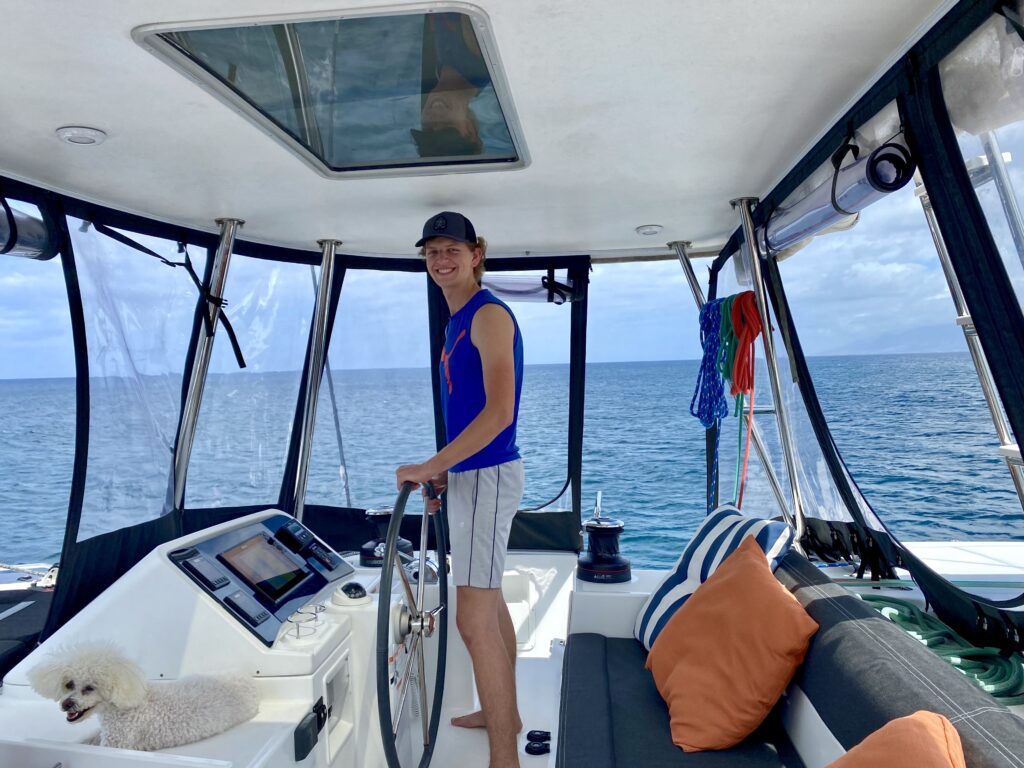
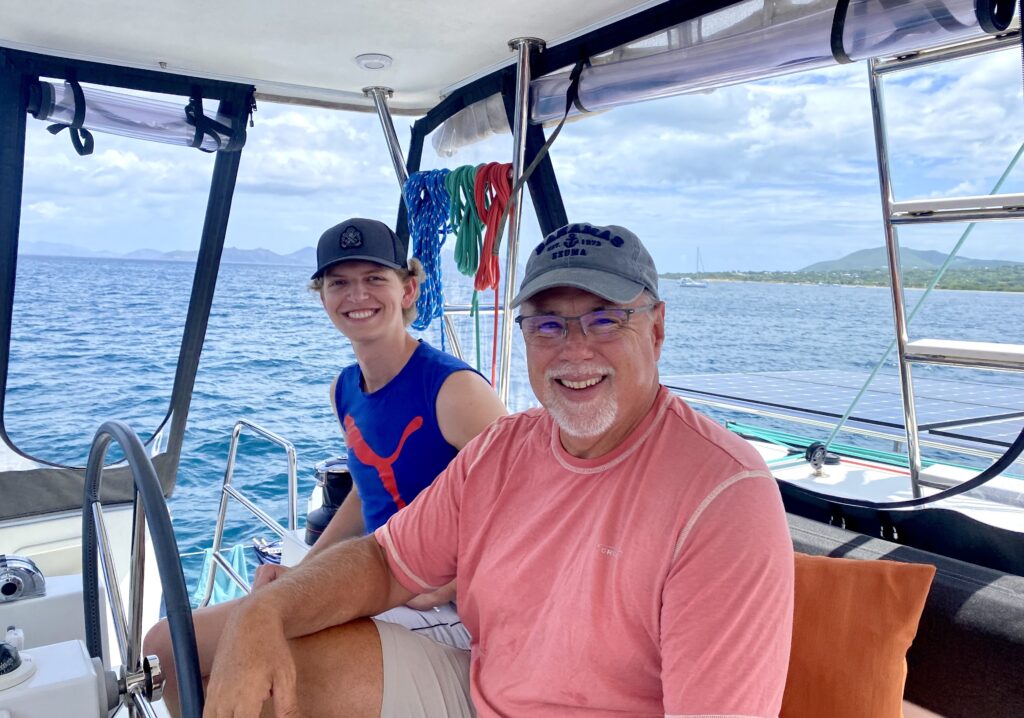
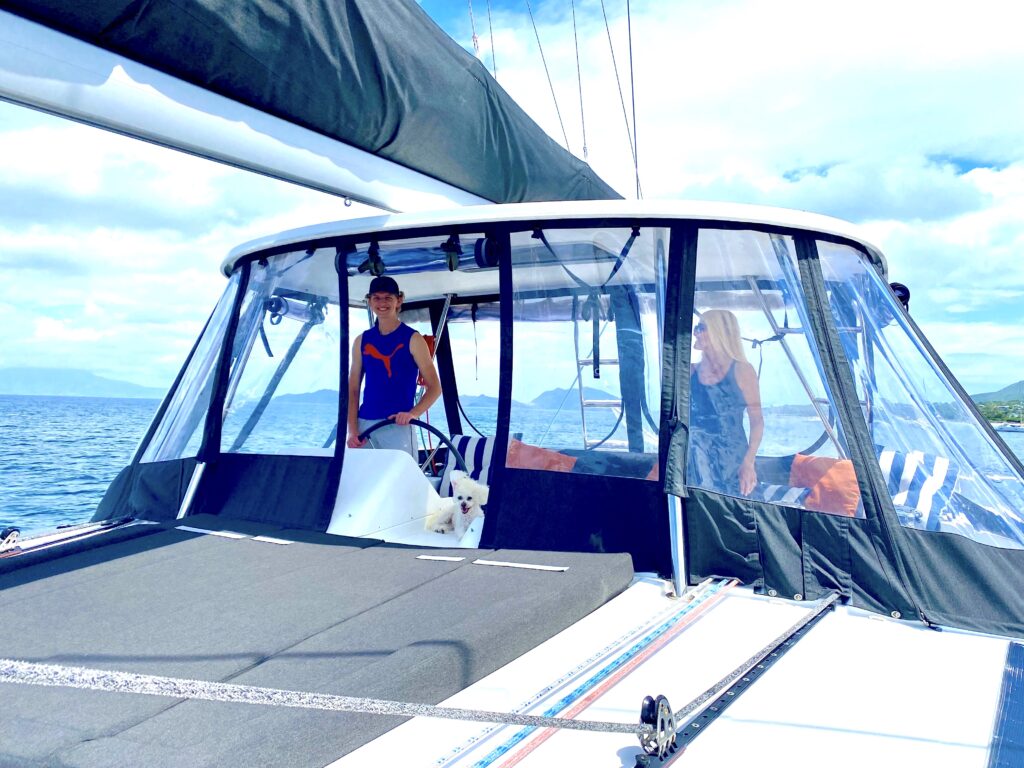
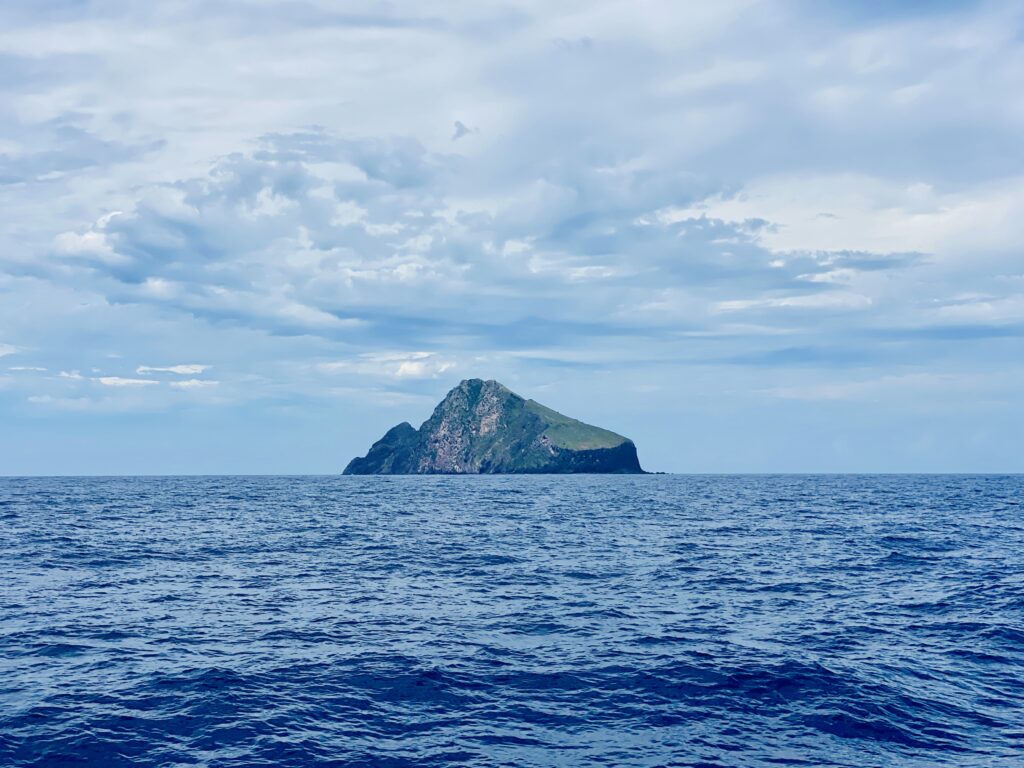
Montserrat is known as the “Emerald Isle of the Caribbean”. It is a tiny volcanic island owned by the British, with green, lush foliage on mountainous slopes. It has an active volcano called Soufrière Hills, and beautiful black sand beaches. If we had more time, we would have cleared in with customs and toured the island, but we were bound for the island of Guadeloupe, and could only anchor off Montserrat for one night.
Our original plan was to anchor in Rendezvous Bay on the northwest corner of Montserrat, but we were making such good timing that Kory decided to go a little further to help shorten our sail to Guadeloupe the following day. We made it to Old Road Bay anchorage on the west coast of Montserrat, about halfway down the island. We were captivated by the steaming volcano in the background and the beauty of the terrain.

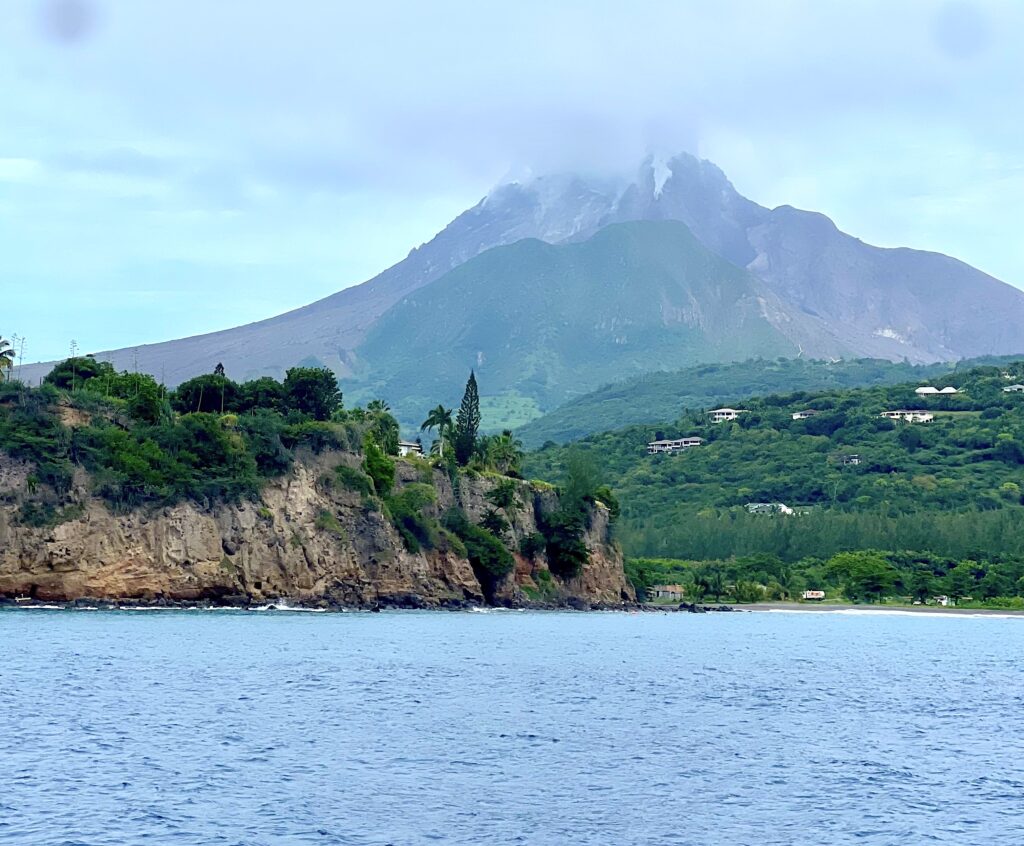
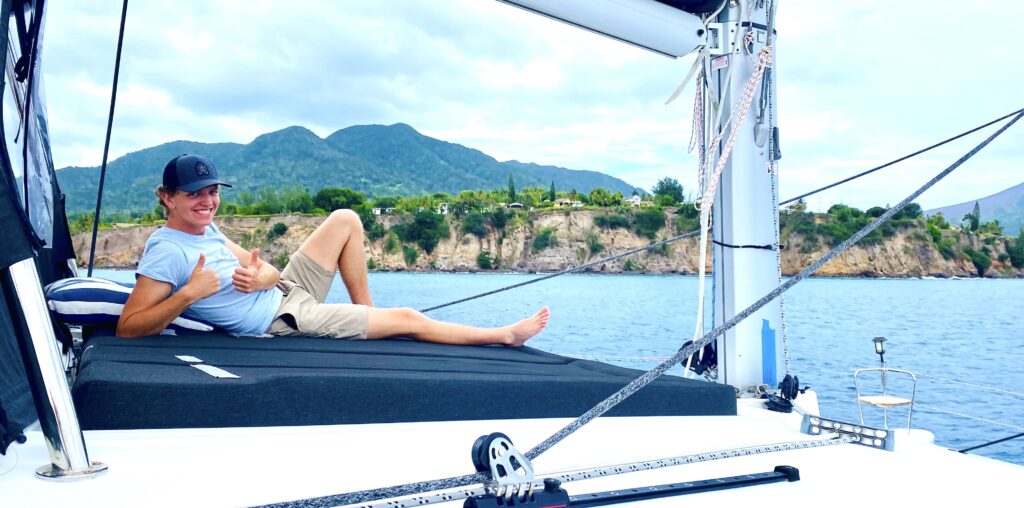
Of interest, before heading to this anchorage, we had to check the Montserrat Volcano Observatory (MVO) website to determine if we were okay to anchor in this area. Since this anchorage is part of the Marine Exclusion Zone, boats are only allowed to anchor here if the volcanic risks are at a Level 0-1. The risk was a “1” the day we were there, so we were safe to anchor for the evening.
Our anchor held tight over a mix of sand and ash, and the waters were a beautiful seafoam green. The gassing volcano was putting off a slight sulfur smell, but it was hardly noticeable. It all added to the excitement of this quaint and secluded anchorage in the Caribbean.
The Soufrière Hills volcano lay dormant for centuries, but in July 1995, it had a massive eruption that buried the island’s capital city of Plymouth in more than 39-feet of mud, and rendered the southern part of the island (now known as the exclusion zone) uninhabitable and not safe. Today there are buildings, restaurants, hotels, and other facilities in the south, but the island is monitoring the volcanic activity closely.
After anchoring, Kory and Chilor hoisted our yellow “Q” (quarantine) flag. Boaters are not allowed to fly a country’s courtesy flag until they are cleared by customs and immigration; and, until clearance is complete, they are required to fly the yellow Q flag which signals that they have not cleared customs. Without clearing in, boaters are not free to visit land. However, it’s common for non-cleared boaters to go to the beach up to the high water mark, but no further.
Kory jumped into the water immediately to cool off and advised Chilor and I to take the plunge as well. It had been a hot, humid day, and we were eager to cool down. After getting in the water, we decided we needed some exercise, so we swam over a hundred yards to the beach where we enjoyed a nice long walk along the soft pearl-grey sand. It was quite a treat! Then came time for us to swim back to the boat against the current. Kory stayed on the boat and watched us swim back, making himself ready to jump in the dinghy and get us if the swim was too difficult. Chilor and I both made it back with ease and were grateful for the refreshing water, strenuous exercise, and spectacular scenery!
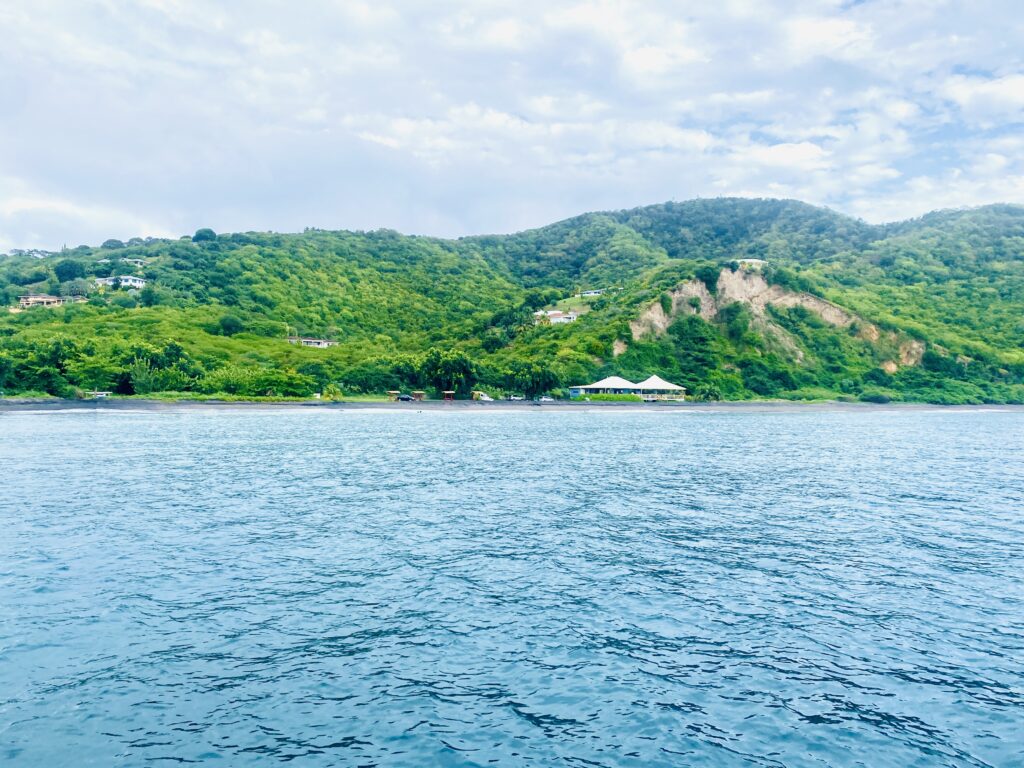
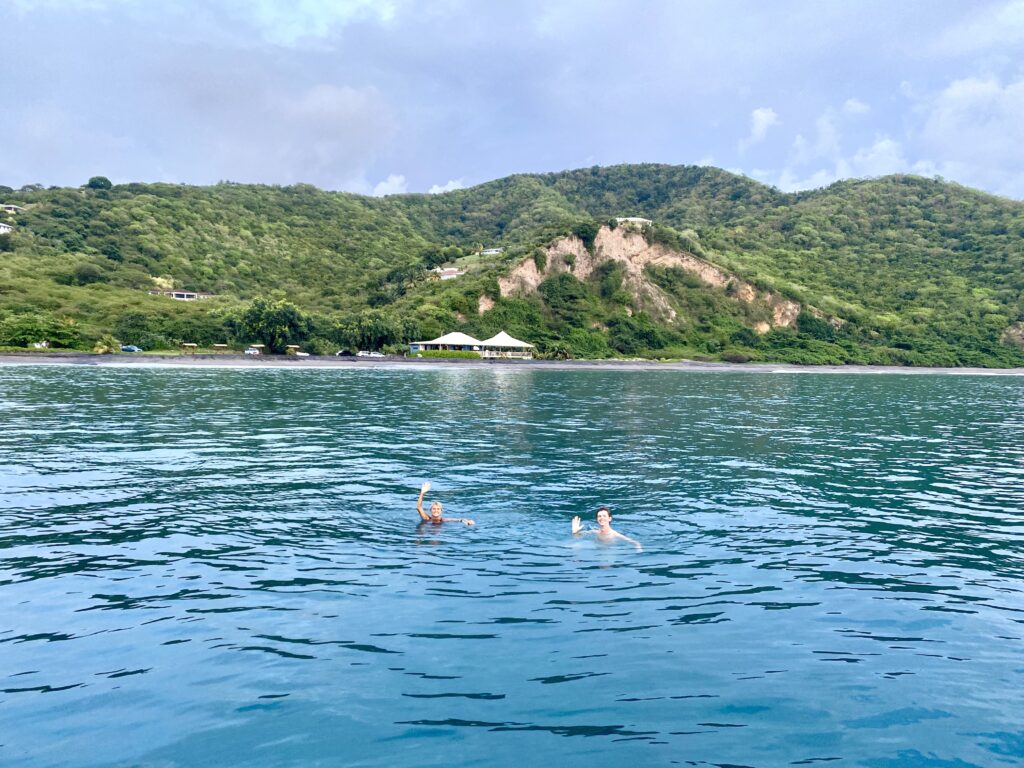
We enjoyed spaghetti bolognese and sautéed zucchini for dinner, while all the while I was thinking about Montserrat’s traditional national dish, Goat Water. Our taxi-driver friend, Teach, taught us about this hearty stew consisting of goat meat chunks, onions, green peppers, carrots and herbs, usually served with warm crusty bread. Maybe someday we’ll get to try this Montserrat specialty. We enjoyed calm waters and a stunning sunset while we waited for fresh cookies to bake in the oven.
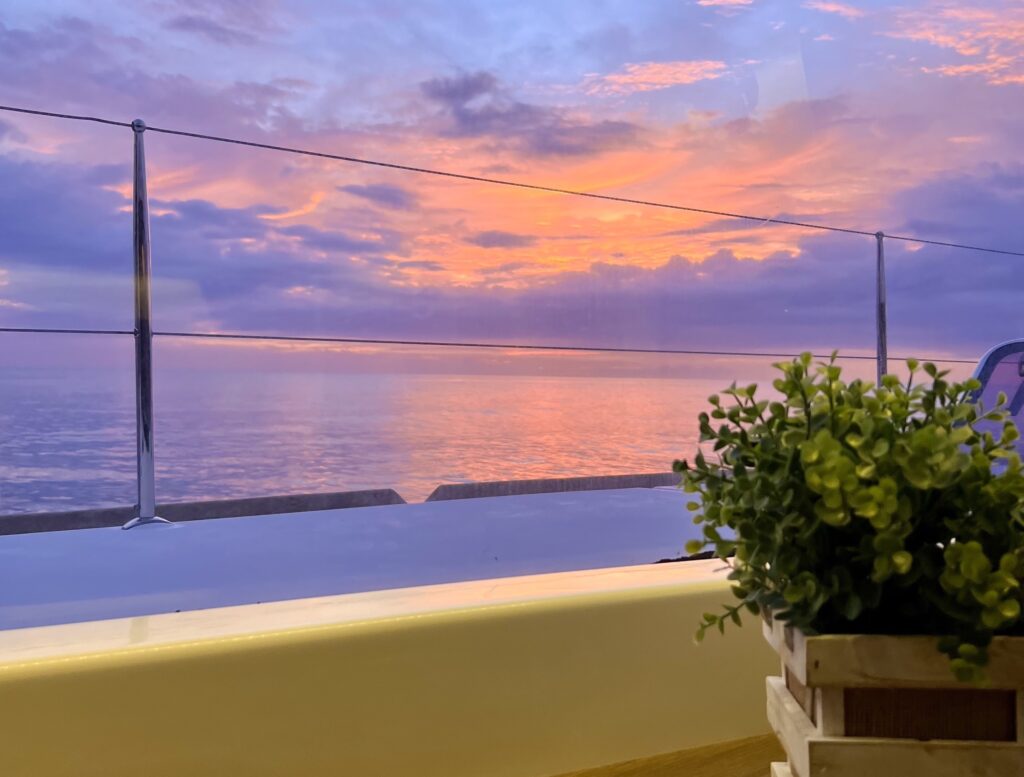

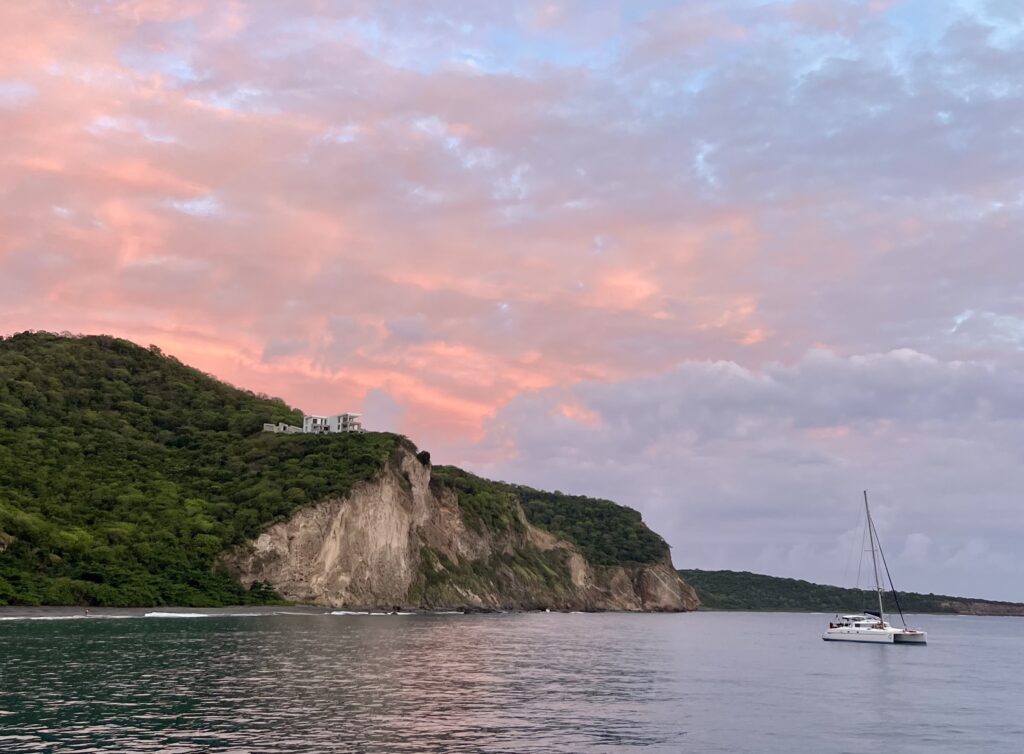
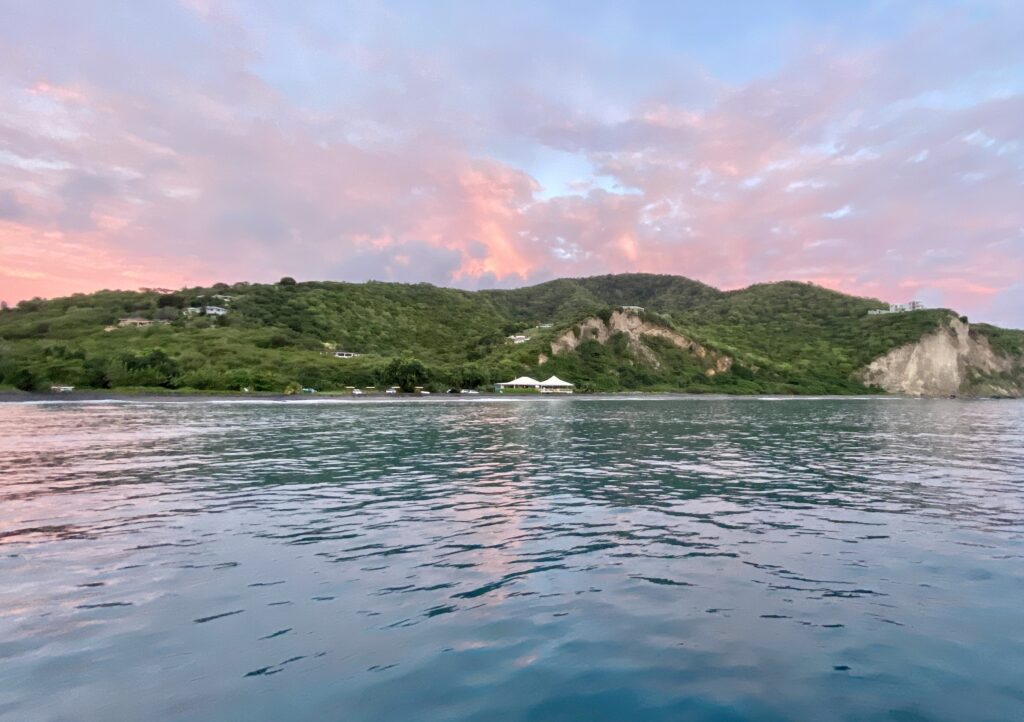
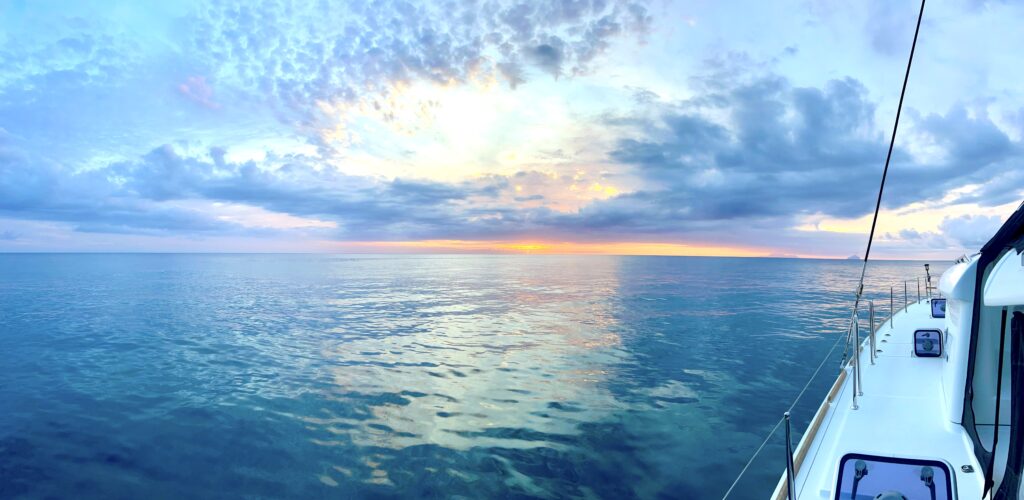
Our afternoon and evening at Montserrat was incredible. But there is a bit of a downside with this anchorage (or at least there was when we were there). After sunset, thousands of tiny flies swarmed our boat. We closed the hatches and doors as soon as we spotted them, turned the air conditioning on, and took shelter. I frantically killed dozens of flies that had gotten inside the salon and galley, but was thankful that we had battened down the hatches when we did. Come morning, there were thousands of dead flies all over the boat. I wish I would have taken pictures. Instead, I grabbed the handvac and began sucking them up as fast as possible while Kory used the hose to spray them off in other areas. We had removed most of them by the time we were ready to pick up anchor. We were hoping the hundreds of dead flies that remained would blow away during our sail. What a way to end our time in Montserrat. But it still goes down as a favorite anchorage and a stunning part of God’s creation!
